CS224W Lecture 3 Node Embeddings
Introduction
- traditional ml for graphs
- input-graph => feature-engineering => structured feature => learning algorithm => prediction
- graph representation learning
- input-graph =>
feature-engineeringrepresentation learning => structured feature => learning algorithm => prediction - goal: efficient task-independent feature learning
- task: map nodes into an embedding space
- possible downstream tasks: node classification, link prediction, graph classification, anomalous node detection, clustering, …
- input-graph =>
node embeddings: encoder and decoder
- encoder: maps from nodes -> embeddings
- decoder(similarity function): maps embeddings -> similarity scores
- learning node embeddings: optimize parameters of the encoder
- simplest approach: encoder is just an embedding-lookup (DeepWalk, node2vec)
- deep encoders -> lecture 6
- objective: maximize similarity score for node pairs that are similar
- key choice: how can we define node similarity
random walk approaches for node embeddings
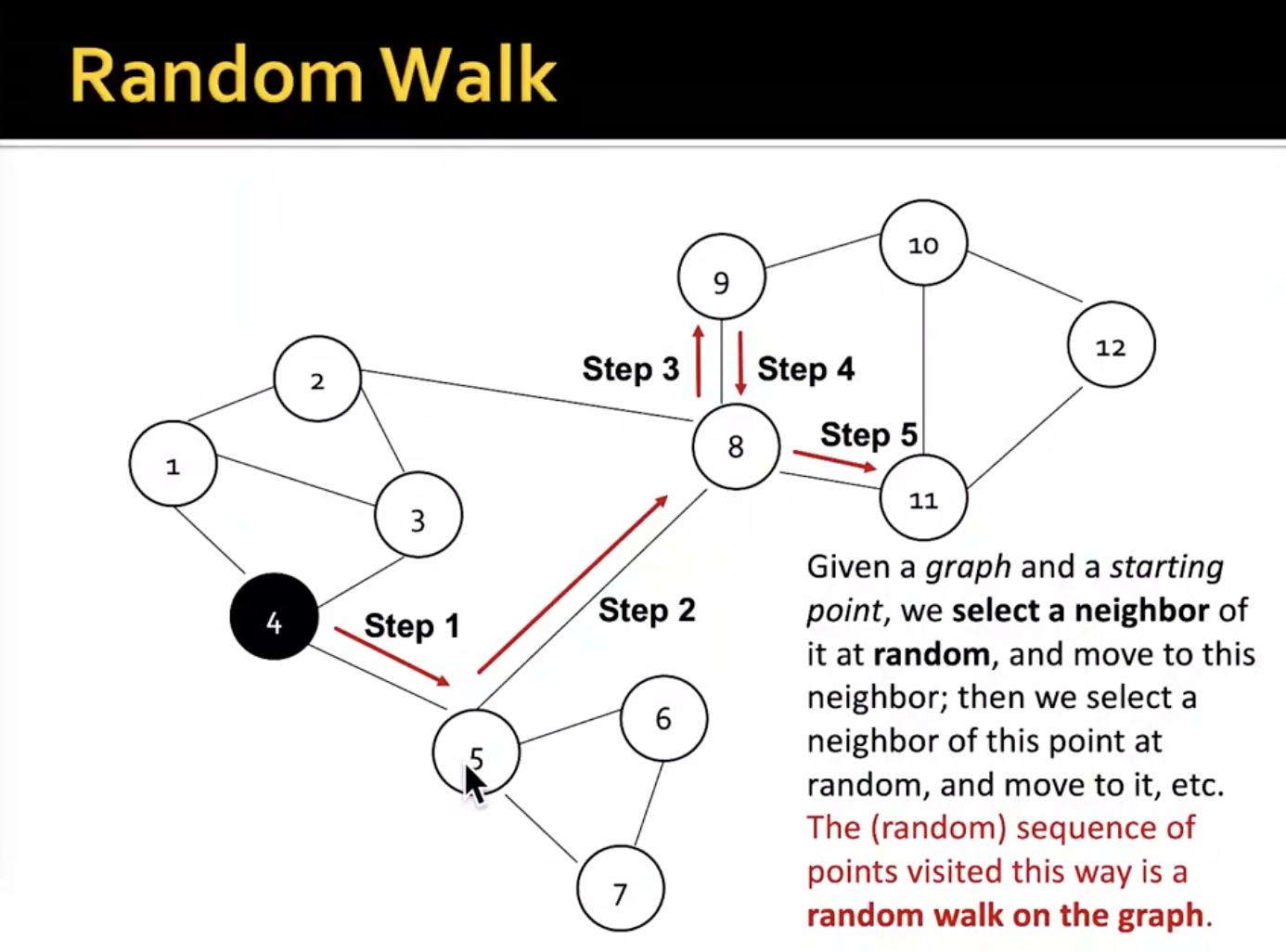
- similarity score approximates a probability that two nodes co-occur on a random walk over the graph
-
why random walk?
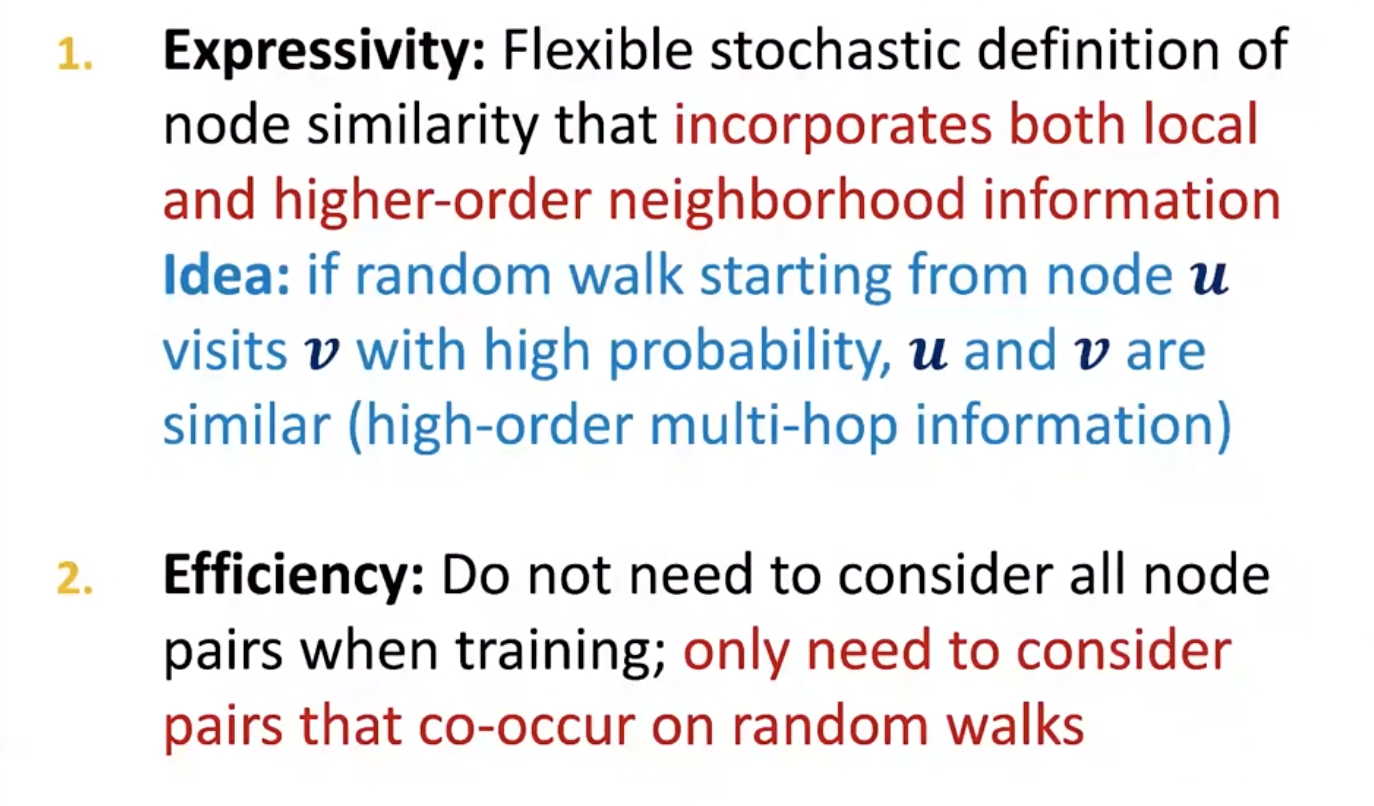
- random walk optimization is computationally expensive => use negative sampling
- how to solve optimization problem? => SGD
- strategy to walk randomly
- simplest: just fixed-length, unbiased random walk -> DeepWalk
- issue: similarity is too constrained
- how can we generalize this? -> node2vec
Node2Vec
- goal: embed nodes with similar network neighborhoods close in the feature space
-
key observation: flexible notion of network neighborhood leads to rich node embeddings
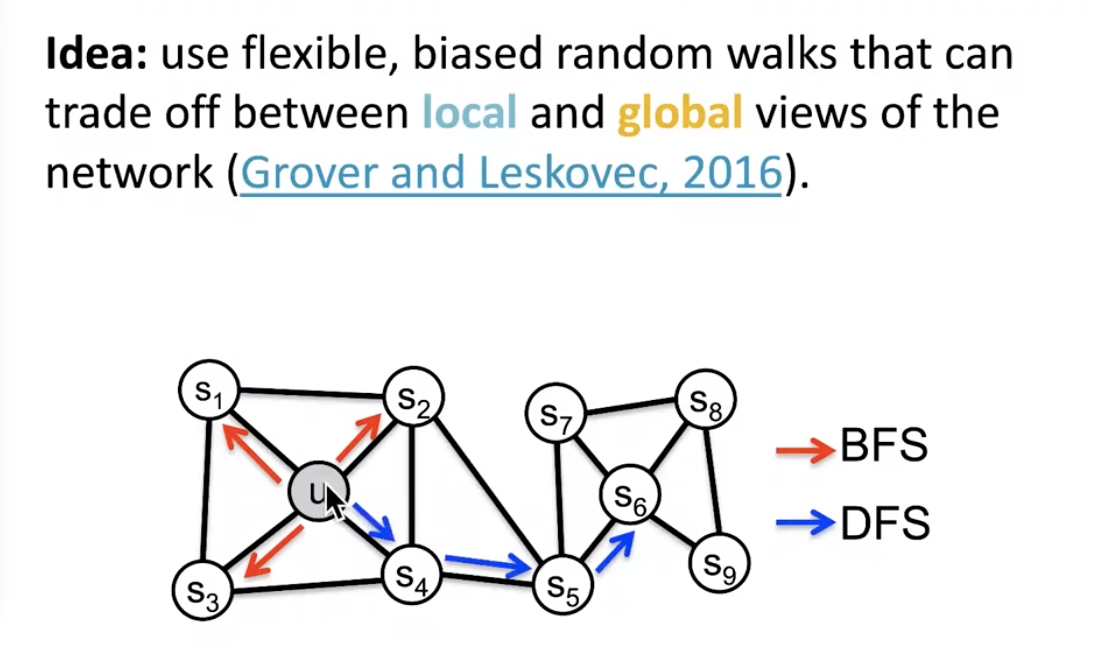
- BFS strategy can capture local features
- DFS strategy can capture global features
- hyperparameter for node2vec
- p: return back to the previous node
- q: in-out parameter, ratio of BFS vs DFS
- biased 2nd-order random walks
- idea: remember where the walk came from
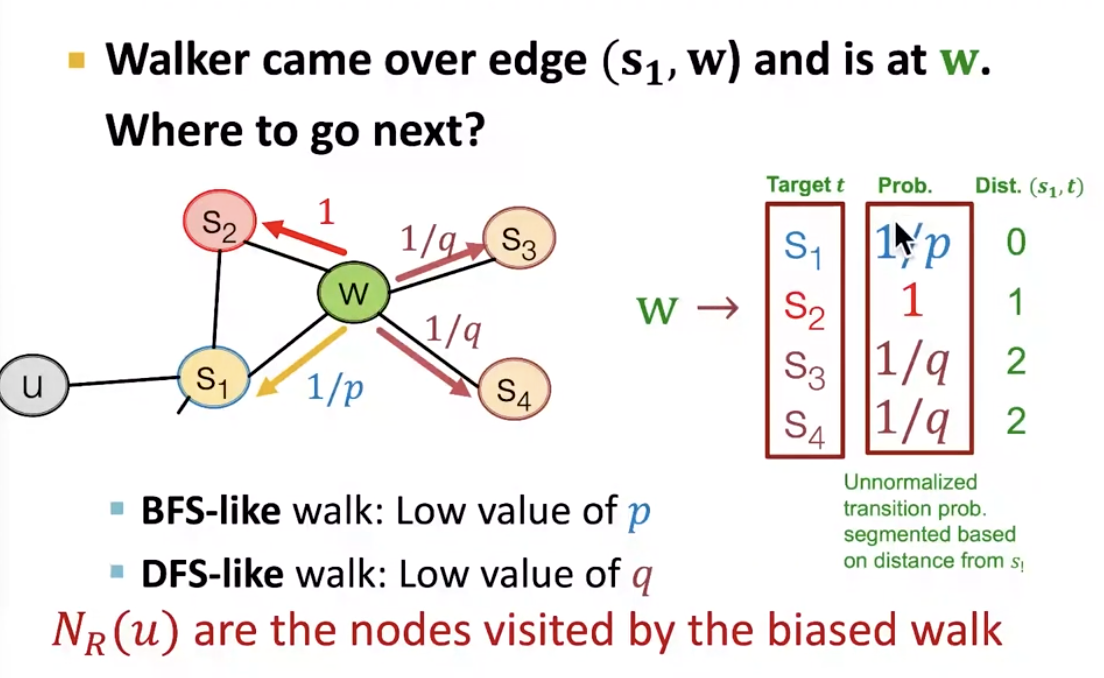
- idea: remember where the walk came from
-
node2vec algorithm
- compute random walk prob
- simulate random walks of specific length starting from each node
- optimize the node2vec objective using SGD
embedding entire graphs
- goal: embed subgraph or entire graph
- approaches
- (simplest) average the node embeddings
- add virtual node to represent (sub)graph and run standard graph embedding technique
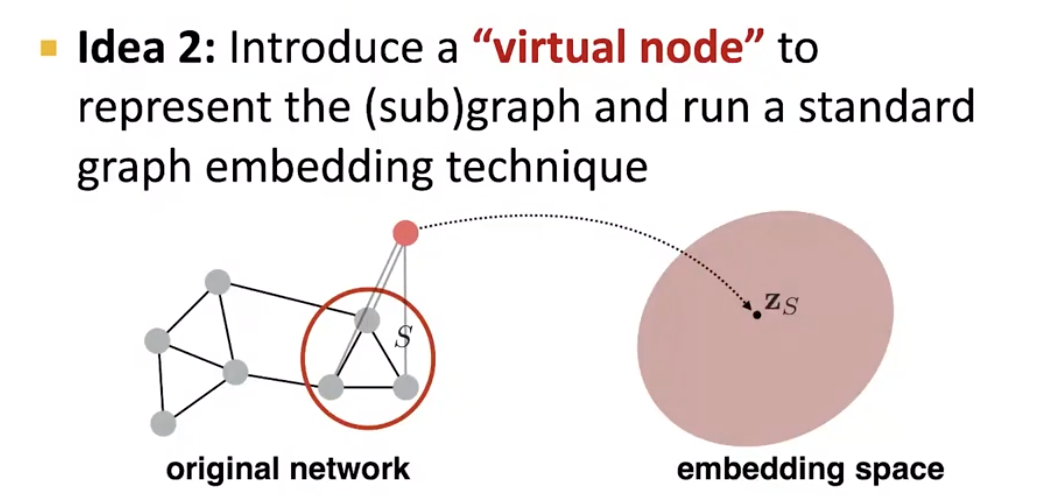
-
anonymous walk embeddings
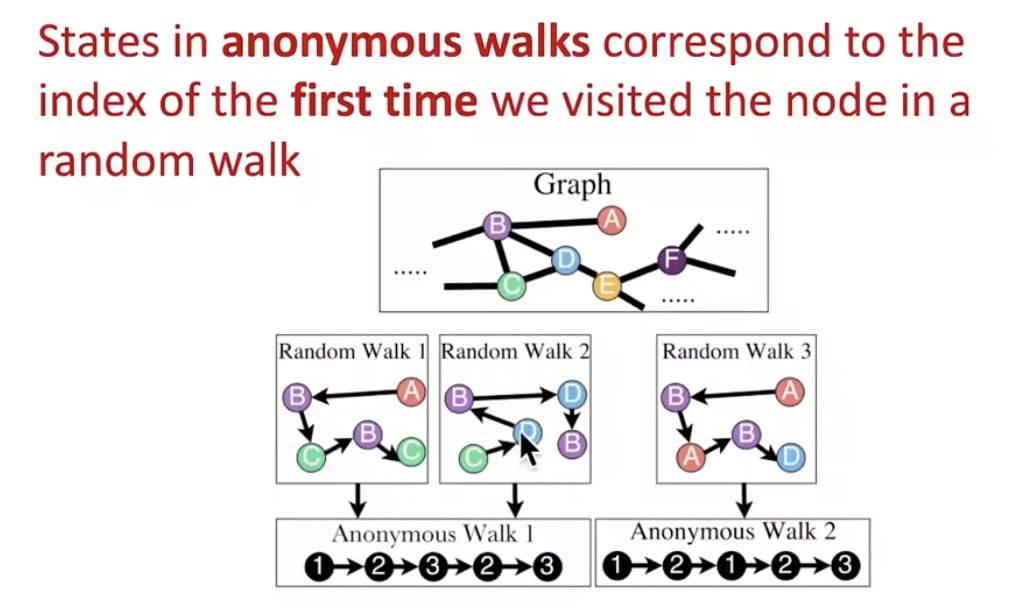
- sample use of anonymous walk
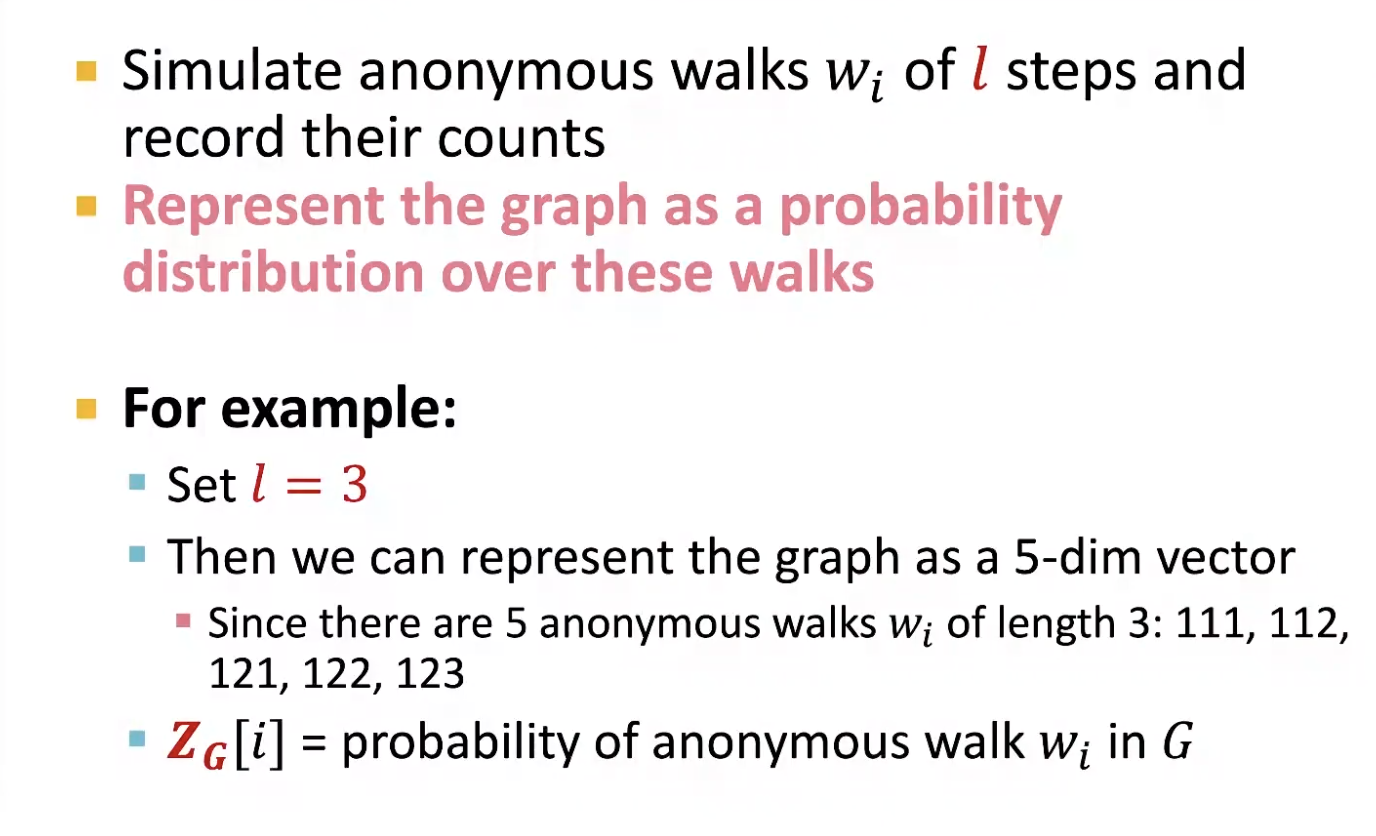
- sample use of anonymous walk
- learn walk embeddings of anonymous walk
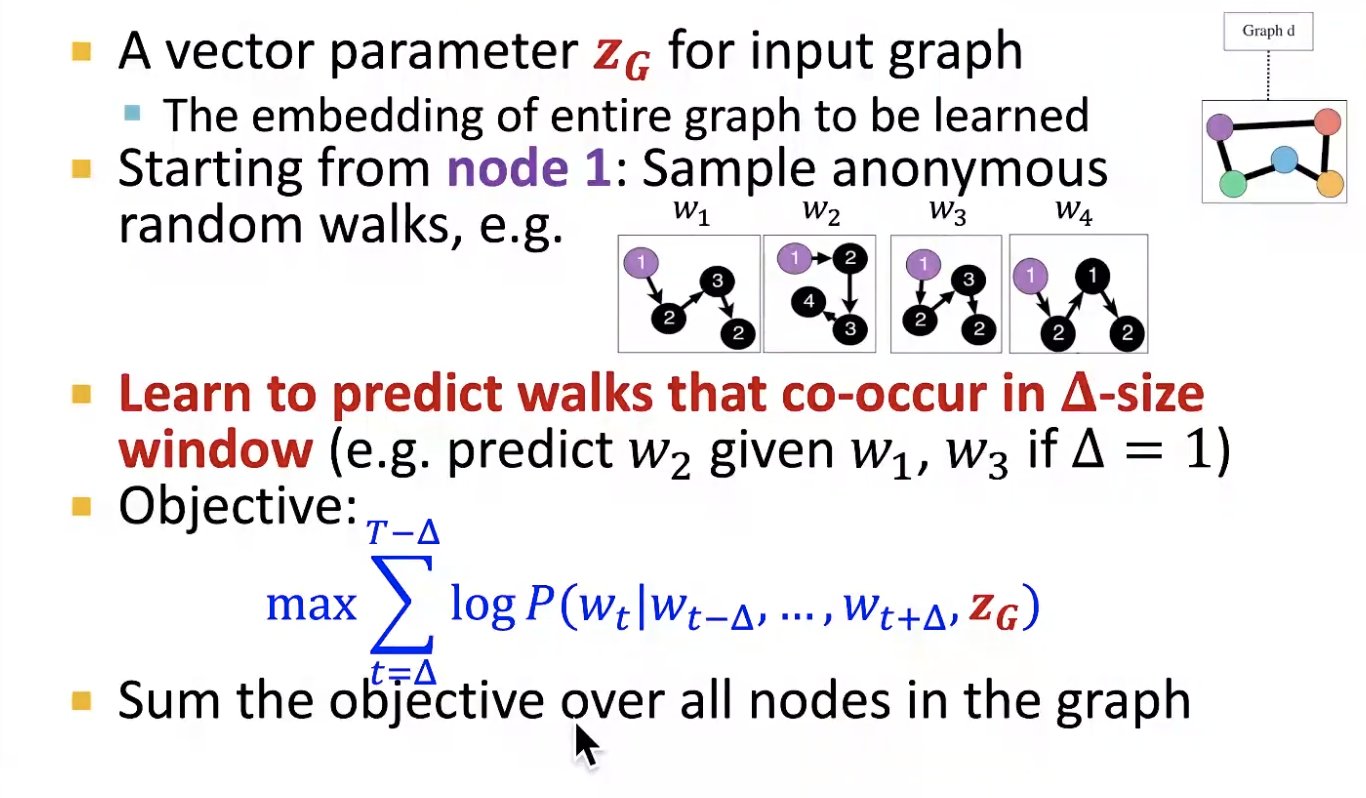
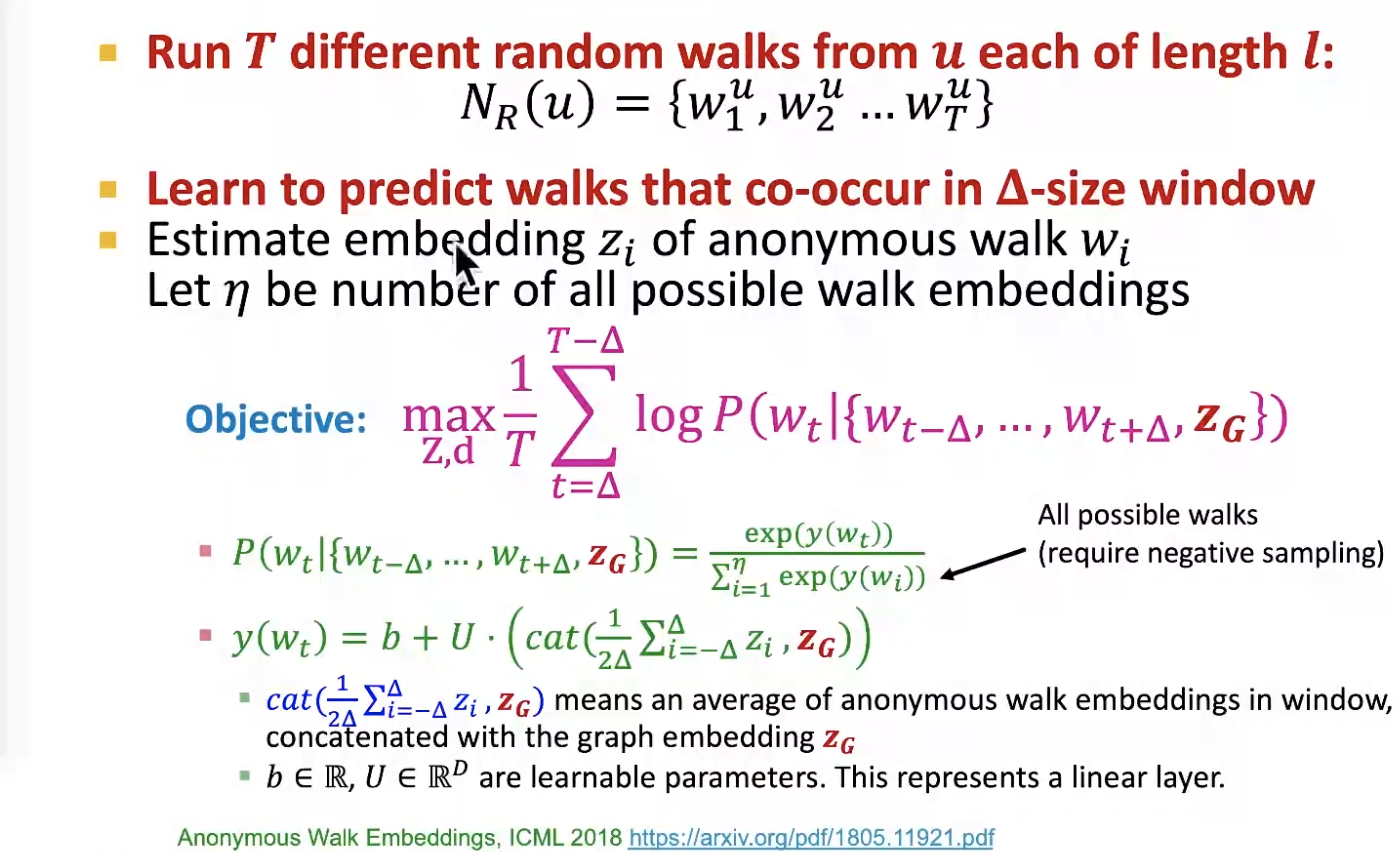
- hierarchiccal embeddings -> later in this lecture
- we can hierarchically cluster nodes in graphs, and sum/avg the node embeddings
November 11, 2021
Tags:
cs224w